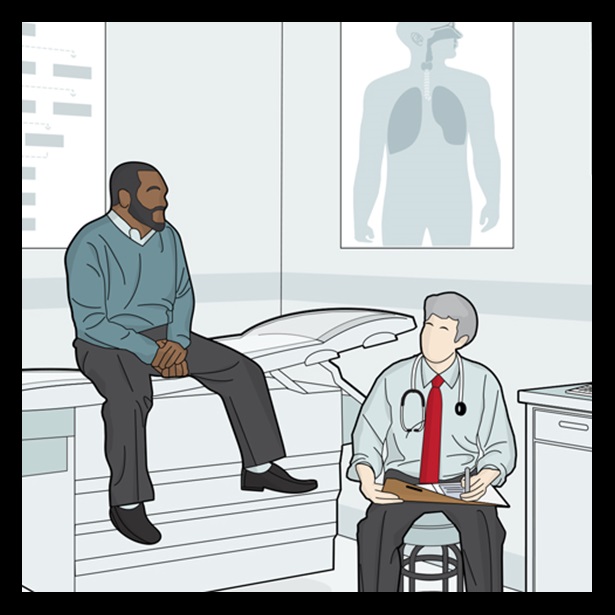Why Doctors Prescribe Antibiotics—Even When They Shouldn’t
Behavioral science-based strategies can help reduce inappropriate use
For many common infections, clear guidelines exist for when antibiotics should be used and when they should not. For example, antibiotics cannot cure viral illnesses like the flu or the common cold, so there is no benefit to taking them for these conditions. Further, unnecessary use of antibiotics puts patients at risk for avoidable adverse effects. And yet, inappropriate antibiotic prescribing continues to be prevalent in the U.S.
Recent research from the Centers for Disease Control and Prevention and The Pew Charitable Trusts shows that nearly 1 in 3 antibiotics prescribed at outpatient facilities—including physician’s offices, emergency departments, and hospital-based outpatient clinics—is unnecessary, amounting to 47 million prescriptions a year.
So why is there so much inappropriate prescribing of these lifesaving drugs? Many factors drive this unnecessary use, including:
- Patient satisfaction and pressure. Patients or their families may expect to get a prescription at an office visit, whether or not an antibiotic is necessary. And even when there is no expectation of antibiotics from patients or their families, doctors may think there is. Studies show that physicians can be affected by this pressure—real or perceived—and as a result are more likely to prescribe antibiotics.
- Time constraints. In outpatient settings, doctors often have limited time to see patients, diagnose their illnesses, and formulate a treatment plan. Interviews with doctors reveal that they may quickly prescribe antibiotics because they want to avoid lengthy explanations of why the drugs are not needed and because a shorter office visit allows them to see more patients. In at least one study of general practitioners, busier physicians who see more patients prescribed antibiotics at a higher rate than did their less busy colleagues.
- Decision fatigue. The process of repeatedly diagnosing and treating large numbers of patients may also affect a doctor’s capacity to make consistent prescribing decisions. This decline in decision-making abilities after having to make repeated treatment choices is known as decision fatigue and may contribute to inappropriate antibiotic use. For example, a recent study showed that as their workdays wore on, physicians became significantly more likely to prescribe antibiotics to patients with acute respiratory infections—conditions for which these drugs are only rarely recommended.
- Uncertain diagnoses. Patients with viral and bacterial infections often have similar symptoms—congestion, cough, sore throat—making it difficult for physicians to differentiate between the two in the absence of a diagnostic test. In these cases, doctors may go ahead and prescribe antibiotics because they perceive the risk of not prescribing them as greater than that from unnecessary antibiotic use.
- Assuming that other doctors are the problem. In some cases, even when doctors agree that antibiotic overuse is a major problem or know that the drugs are not appropriate for a specific condition, they may not think their individual practices, or those of peers in the same medical specialty, contribute significantly to the problem. Rather, studies show that physicians attribute inappropriate prescribing to other clinicians or blame other areas of medicine.
Understanding the underlying behavioral drivers that contribute to inappropriate antibiotic prescribing can help guide the development of effective antibiotic stewardship. And some researchers have already started integrating behavioral science techniques into stewardship strategies, with some encouraging findings.
For example, one study showed that physicians whose offices displayed a “commitment poster” explaining their pledge to follow guidelines for appropriate antibiotic prescribing and the reasons why the drugs are not always needed, had a 20 percent lower rate of inappropriate prescribing than those not displaying a poster. Other studies using interventions that target behavioral drivers have also shown promise. One required that doctors provide a justification in the patient chart when antibiotics were prescribed for conditions for which antibiotics are not indicated, and another ranked physicians based on their level of inappropriate prescribing (i.e., those with higher rates of inappropriate prescribing were told they were “not a top performer”). Both led to significant reductions in inappropriate prescribing compared with conventional approaches.
Deciding whether or not to prescribe an antibiotic can be a complex process, during which physicians are influenced not only by medical information, but also by their interactions with patients, the uncertainties that surround medical decision-making, and the organizational challenges of delivering care in busy outpatient settings. By understanding the factors that affect physicians’ antibiotic prescribing decisions and applying concepts from the social and behavioral sciences, inappropriate prescribing can be reduced—which in turn can reduce the threat of resistance.
David Hyun, M.D., works on The Pew Charitable Trusts’ antibiotic resistance project.


What Drives Inappropriate Antibiotic Use in Outpatient Care?
Behavioral science strategies can help improve antibiotic prescribing habits


Antibiotic Use in Outpatient Settings
Health experts create national targets to reduce unnecessary antibiotic prescriptions










